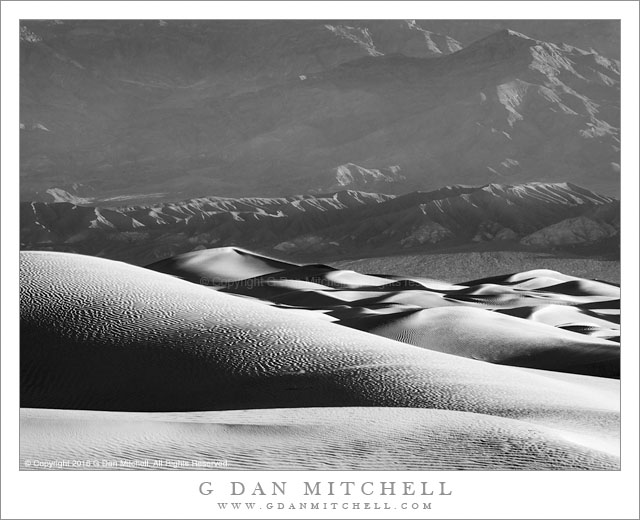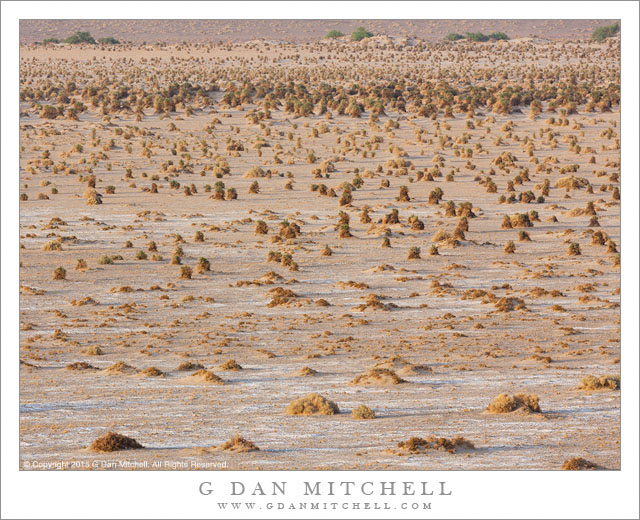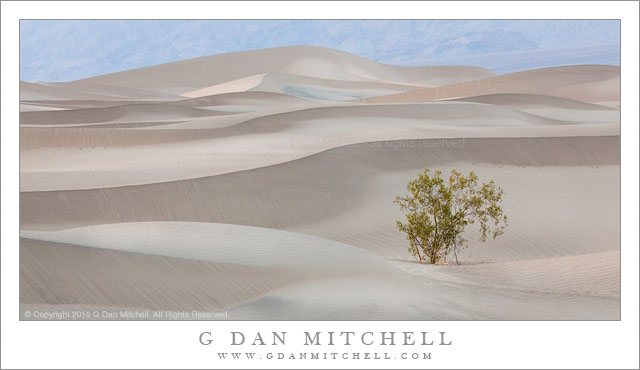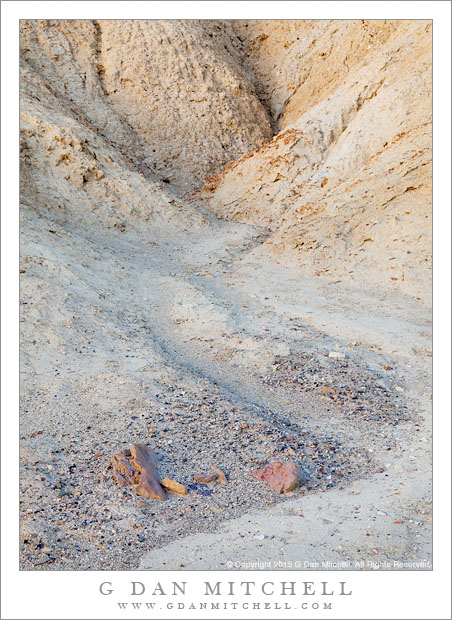
Dunes and Mountains, Morning. Death Valley National Park, California. March 31, 2016. © Copyright 2016 G Dan Mitchell – all rights reserved.
Morning light on sand dunes and rugged mountains, Death Valley National Park
On our final morning in Death Valley this past March I got up before dawn one more time, loaded some gear in the car, and drove a short distance to a place from which I had decided I wanted to access sand dunes. I had been in the same area a few days earlier, and on that visit I spotted a likely looking area not far away — and that was my target this time as I walked alone across the quiet playa in pre-dawn light.
Out here the light arrives with surprising suddenness, despite the hints that it is coming, seen in light on peaks to the west and far up the valley. Silently the first light skims across dune tops, and within seconds the soft light is replaced by brighter highlights and darker shadows. Here I looked east across low dunes toward mountains along the eastern side of the valley at the base of the Amargosa Range. The morning haze and shadows on the mountains muted the their details. I photographed here for a few more minutes before packing and walking back to my vehicle, and within an hour we were on our way out of the park.
 G Dan Mitchell is a California photographer and visual opportunist. His book, “California’s Fall Color: A Photographer’s Guide to Autumn in the Sierra” is available from Heyday Books and Amazon.
G Dan Mitchell is a California photographer and visual opportunist. His book, “California’s Fall Color: A Photographer’s Guide to Autumn in the Sierra” is available from Heyday Books and Amazon.
Blog | About | Flickr | Twitter | Facebook | Google+ | 500px.com | LinkedIn | Email
All media © Copyright G Dan Mitchell and others as indicated. Any use requires advance permission from G Dan Mitchell.



